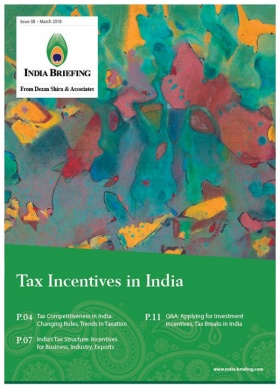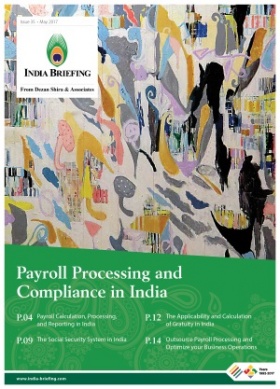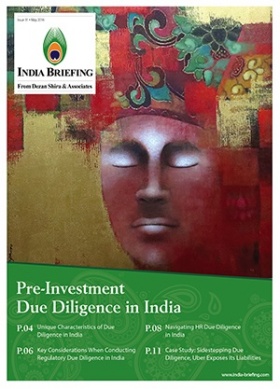Eastern Peripheral Expressway Lays Infrastructure Challenges Bare for Investors
The yet-to-be inaugurated Eastern Peripheral Expressway (EPE) is among a string of high profile highway projects that will increase the efficiency of road mobility in India.
The six lane, 135 km (84 mi) long expressway will allow vehicles not destined for Delhi to bypass the metropolis entirely. This will give Delhi residents a huge respite from vehicular congestion and air pollution caused by heavy logistics movement through the heart of the city.
Presently, vehicles destined for the neighboring states of Uttar Pradesh, Punjab, Haryana, Rajasthan, Himachal Pradesh, Jammu and Kashmir, and Uttarakhand pass through Delhi to connect to other national highways.
To avoid massive traffic congestion, the Delhi government restricts the entry of commercial freight vehicles into the city to between 11 pm and 7 am, which in turn raise the costs of logistics.
However, while much anticipated, the construction of the EPE has experienced multiple delays due to the scope of financing involved and unfriendly bidding process, exposing long-standing challenges faced by investors in India’s road infrastructure sector.
What is the Eastern Peripheral Expressway?
The EPE will connect industrial hubs in both Haryana (Sonepat and Faridabad cities) and Uttar Pradesh (Greater Noida and Ghaziabad) state.
Built at a cost of US$663 million, the EPE has two unique features:
- Vehicles plying on it will pay toll according to the distance covered; and,
- Weigh-in motion sensors at entry points to prevent the overloading of vehicles.
Areas for unloading excess freight are also planned. Currently, overloaded vehicles are unloaded at busy toll plazas, causing unnecessary traffic delays and raising logistics costs.
The EPE is the first part of a two phase expressway project that will bypass Delhi like a ring road. The second, the Western Peripheral Expressway (WPE), is a 135 km (84 mi), partially completed project that bypasses/edges past the western border of Delhi.
India’s developing road network
India has the world’s third largest road network after the US and China.
In 2017, India had 115,435 km (71,727 mi) of national highways constructed. Besides national highways, the country has built expressways to connect major cities and industrial hubs that are situated in relatively close proximity.
The Mumbai-Pune Expressway and the Delhi-Gurgaon Expressway are important Indian highways – in the state of Maharashtra and the National Capital Region – respectively.
Highway construction is a key priority for the Bharatiya Janata Party (BJP)-led government under Prime Minister Modi. Interestingly, the Golden Quadrilateral highway network, connecting India’s four main metropolitan cities – Delhi, Mumbai, Chennai, and Kolkata – was built under the previous BJP government.
Bidding for road projects in India
India’s roads and highways ministry now promotes the ‘build, operate, and transfer’ (BOT) mode of awarding contracts for highway projects, replacing the previous ‘engineering, procurement, and construction’ (EPC) mode.
The BOT mode allows the developer to recover financial investments through long-term toll collections and other charges. However, the capital costs involved in constructing the EPE were deemed too high to recover through toll duties. In the EPC mode, the government provides capital funding for construction projects and the developer agrees to complete all construction activity under a fixed time frame.
The initial BOT approach did not attract any bids for building the EPE, compelling the National Highways Authority of India (NHAI) to switch back to an EPC mode. This led to multiple contractual delays, pushing back the start of construction work for the EPE.
The government’s eventual approval of the EPC mode is indicative of the private sector’s skepticism of alternate models.
In recent months, the government has responded by implementing the ‘toll, operate, and transfer’ (TOT) model. This type of contract allows for the auctioning of highways constructed by the federal government for a period of 30 years.
Private investors are responsible for road maintenance and are permitted to recover costs through tolls or charges. However, it remains to be seen if the TOT model appeals to private sector players, as it requires significant up-front investments.
Since 2016, the government has additionally promoted a Hybrid Annuity Model (HAM) to encourage small developers. Through HAM, developers receive 40 percent funding from the government, in installments. The residual 60 percent is recovered from the NHAI, in the form of annuity. However, like the TOT model, the recovery of annuity payments is time-consuming.
 Investing in India’s roads infrastructure: Learning from the EPE
Investing in India’s roads infrastructure: Learning from the EPE
BOT, whether annuity-based or toll-based, is a segment of the public private partnership (PPP) model that the government is attempting to popularize for road infrastructure projects in India.
The federal government permits 100 percent foreign direct investment (FDI) under the automatic route in road and highway projects. Foreign companies often form consortiums with their Indian counterparts to bid for infrastructure projects.
Yet, continuing low-key participation from the private sector points to long-standing challenges.
For one, investors often find it difficult to recover financial investments through tolls or annuities; pressure by the public can force the operator to lower or prematurely roll-back toll rates.
Further, while it can take several years for developers to recover costs, they are responsible for all expenditure related to the annual maintenance of these projects.
The preference for the EPC mode in the construction of the Eastern Peripheral Expressway is thus a clear indication of the private sector’s aversion to the capital-intensive BOT mode.
Moreover, the EPE, touted as India’s ‘smartest highway’ (technologically advanced), had a near impossible construction target of 400 days.
The target failed to account for delays in land acquisition and technical difficulties, and is an example of project management challenges in India’s infrastructure sector.
These concerns routinely dissuade the private sector from increasing their investments in the roads and highways sector, often compelling government contractors and agencies to take over project funding and release fresh tenders for bidding.
About Us
India Briefing is published by Asia Briefing, a subsidiary of Dezan Shira & Associates. We produce material for foreign investors throughout Eurasia, including ASEAN, China, Indonesia, Russia, the Silk Road, & Vietnam. For editorial matters please contact us here and for a complimentary subscription to our products, please click here.
Dezan Shira & Associates provide business intelligence, due diligence, legal, tax and advisory services throughout India and the Asian region. We maintain offices in Delhi and Mumbai and throughout China, South-East Asia, India, and Russia. For assistance with India investment issues or into Asia overall, please contact us at india@dezshira.com or visit us at www.dezshira.com.
- Previous Article Investing in North-East India: Incentives for Industries
- Next Article Data Centers in India: Growing Digitization Creates Opportunity for Investment













